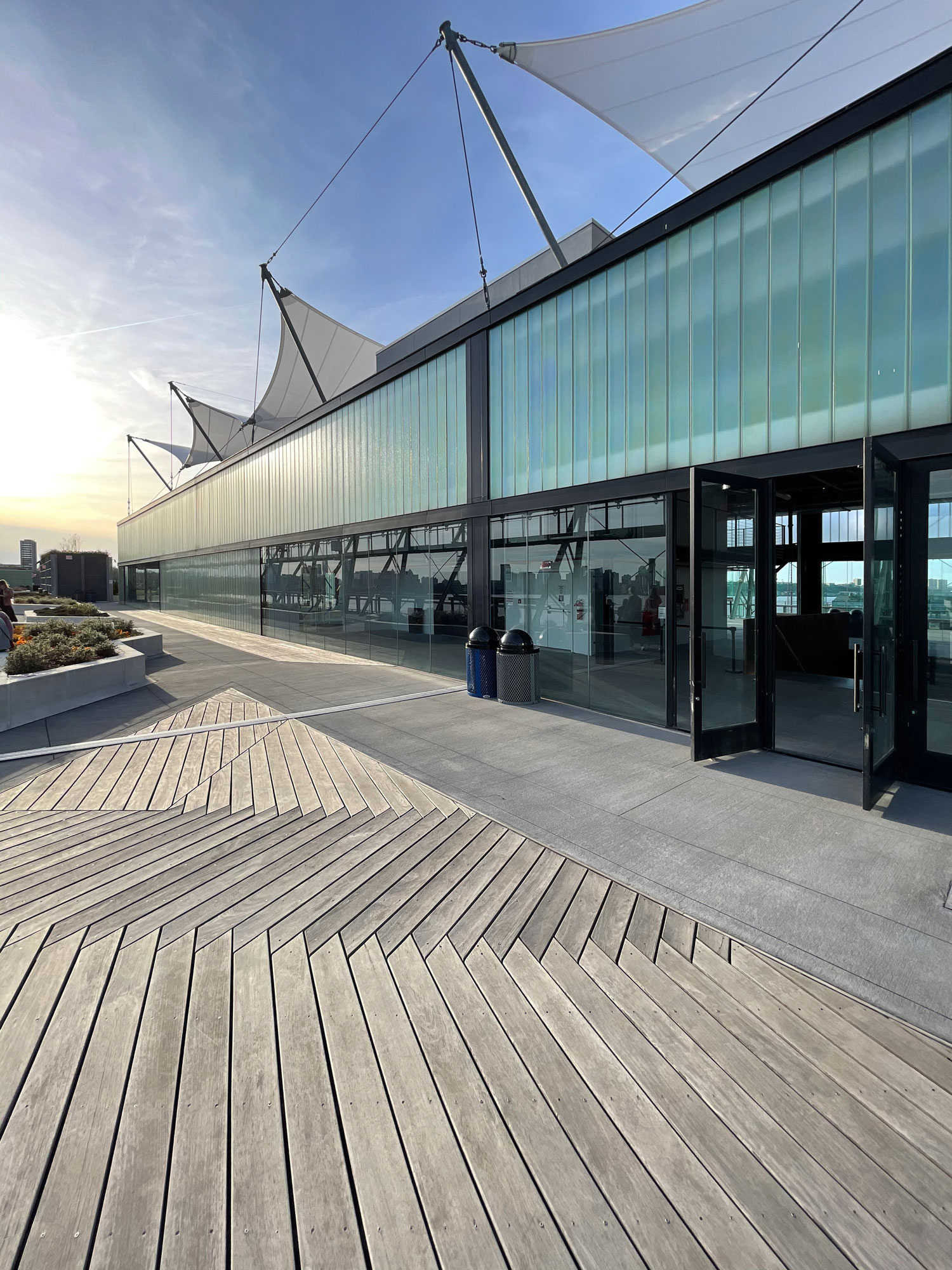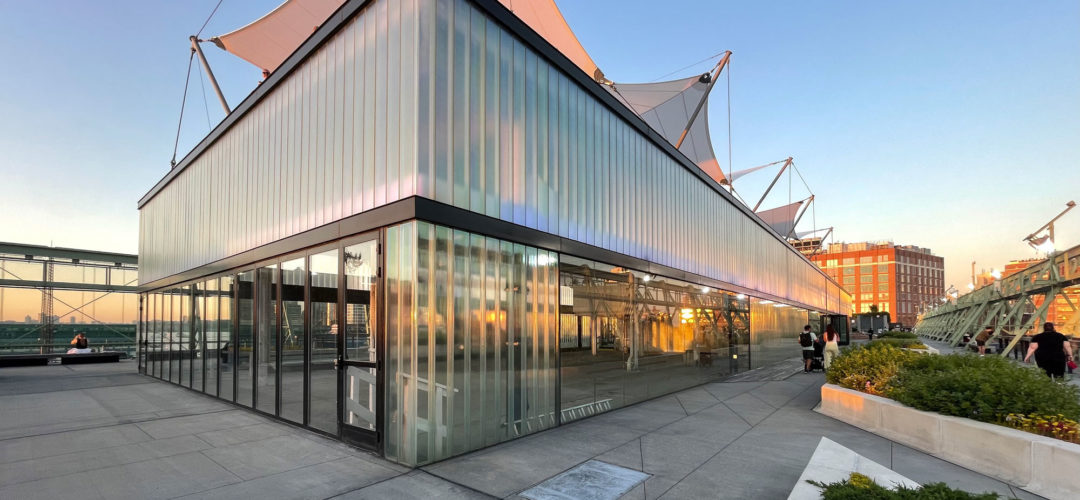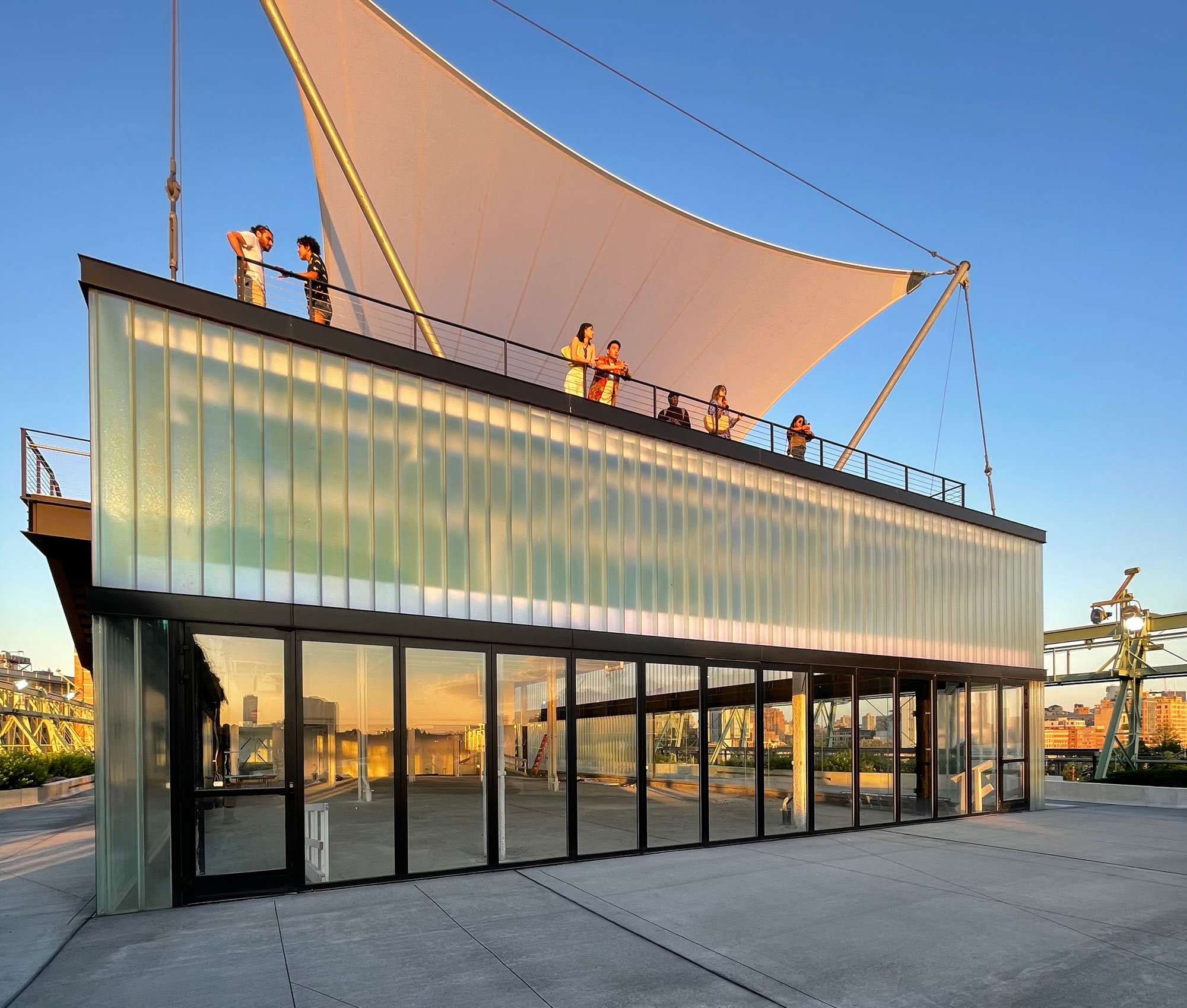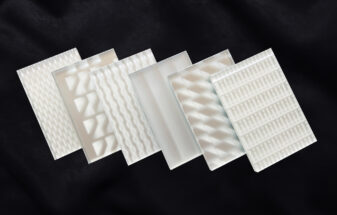Transformed West Side Pier Features Our Channel Glass
Manhattan’s iconic Pier 57 has been transformed by an ambitious redevelopment project, with walls of our channel glass to help blend old with new.
Designed by Handel Architects, the $410 million restoration and revitalization project created 350,000 square feet of mixed-use space on the midcentury structure, with an additional 50,000 square feet on the ground floor for public amenities. With Google as the anchor tenant, Pier 57 will also offer a food hall curated by the James Beard Foundation, a public gathering place called the Living Room, and flexible meeting space for booking by community organizations.

Pier 57, New York, NY by Handel Architects. Photos by Michael Young.
The building’s rooftop park, nearly two acres in size and open to the public, is the largest of its kind in New York City. The venue will also provide outdoor screening space for the annual Tribeca Film Festival.
Perfectly positioned to reflect Hudson River sunsets, the building’s walls are made of 6,400 square feet of our channel glass in our SF60 frame system, installed by David Shuldiner, Inc. The lower-level walls are primarily made of Clarissimo glass, a clear glass allowing extensive river views from the lobby and restaurant areas on the ground floor. The walls of the second story offices and other selected panels are made of glass with the 504 Rough Cast texture. The choice of a translucent finish for the glass on this floor shields the workspace from glare while creating a glowing exterior. Throughout the building, low-e coatings serve to minimize the amount of ultraviolet and infrared light that is allowed to pass through the glass walls, while maximizing the transmission of visible wavelengths.
Jessica Levine, Senior Associate at Handel Architects, described the role of the channel glass at Pier 57 as follows:
“As a new structure built on a historic building, we wanted the pavilion on the roof of the Pier to read as a light intervention, both in material selection and the language of design. The channel glass achieves this balance for us by acting as a diffuser of light and also in its industrial appearance–complimenting the nature of a historic shipping pier. The channel glass allowed us to have a cohesive design by providing the flexibility between translucent and transparent finishes.”
Bendheim co-owner Robert Jayson commented, “We are proud to participate in the ongoing revitalization of New York City, including this important development. Our channel glass allowed the architects to build walls that are both functional and beautiful, making the most of Pier 57’s spectacular setting on the Hudson.”
Listed on the National Register of Historic Places, Pier 57 was originally completed in 1954 as a project of the New York City Marine and Aviation Department. First used as a shipping terminal for the Grace Line steamship company, it was the largest dock ever built by the City of New York. With the decline of maritime shipping in New York, the pier became a parking garage for New York City Transit buses in 1969, then closed down altogether in 2003. The Hudson River Park Trust, a public benefit corporation established in 1998 to develop and operate public park space along Manhattan’s West Side shoreline, began efforts to redevelop the pier in 2008. The current project represents a significant public-private collaboration, with contributors including Google, RXR, Young Woo & Associates, The Baupost Group and Jamestown in addition to the Hudson River Park Trust and the City and State of New York.
Bendheim is one of the world’s foremost resources for specialty architectural glass. Founded in New York City in 1927, the fourth-generation, family-owned company offers a virtually unlimited range of in-stock and custom architectural glass varieties. Bendheim develops, fabricates, and distributes its products worldwide. The company maintains production facilities in New Jersey and an extensive showroom in New York City






